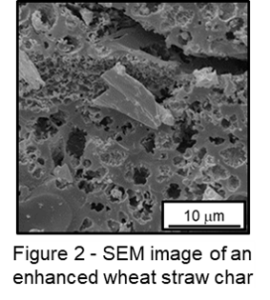Preventing metal infiltration from accelerated WEEE contamination via leaching cryptocurrency farming waste
The global problem
In a world of climatological turmoil and finite resources, we have continued to fowl our planet through dreams of digital wealth, increased energy production from non-renewable means and then, in our customary way, we discard our waste to landfill when we have exhausted it. Cryptocurrency mining has globally boosted landfill reserves of Waste Electrical and Electronic Equipment (WEEE) In the form of circuitry, wiring, storage devices, semiconductor materials and precious metals used in high-performance processors. Throwing our morals, and environmental duty to the wind, we have created a surplus of inorganic waste at landfill sites. The generation rate of global electronic waste (e-waste) attained two mega tonnes (Mt) per year and is expected to reach 74 Mt by 2030. Household electrical appliances, especially personal computers (PCs) and mobile phones contribute to approximately 50% of the overall production of e-waste.
Although individual countries have their own recycling and repurposing policies, developing nations and some developed nations, such as the United Kingdom, have not perfected landfill separation. As a result, through organic waste decay and degradation, mixed with general household waste will create an acidic/basic environment, depending on the waste present, (known as the leachate, often containing hydrogen sulphide) and will begin to digest metals. In an aqueous phase, the metals will percolate through the waste and enter groundwater, metal transference is often due to rainwater. Through infiltration and transport systems, metal-polluted water will reach tributaries and or areas of land use, contaminating arable land and destroying biodiversity.
Metals of leaching possibility consist of Cu, Cd, Cr, Mn, Ni, Co, Ta, W, Nd, Pb, Al as well as precious metals such as Pt and Pd. For example, the total content of Pb in RAM (random access memory), and the CPU (Central Processing Unit) in PCs was calculated at approximately 57,000 and 27,000 mg/dry kg, respectively. Also, Integrated Drive Electronics Cables contain ~4400 mg/dry kg of Cu and ~10,000 mg/dry kg of Ni.
Although in low concentration, many are considered to be not harmful (such as Al and W), metals such as Cd, Cr, Co, Mn, Ni and Ta have been shown to damage the lungs, stomach and kidneys through prolonged exposure, often resulting in cancers. In some cases, water supplies are appropriately screened for metal contamination, in developing countries this is not always the case and especially for countries prone to flooding, contamination can build up to toxic levels and poison the land as well as broader biodiversity and land workers.
How we will tackle this
An elegant solution to this problem has emerged through the controlled transformation of biorenewable feedstock materials, structured biochars. Biochars are derived from the rugged lignin backbone present in lignocellulosic waste streams that through appropriate pre/post-treatment, a near pure carbon canvas can be created. Through physicochemical processing in the form of ultrasound coupled with acid washing, a customisable biochar with a defined pore architecture can be produced (Figure 1). Materials developed at the University of Hull from cereal straw waste have been found to exceed surface areas of >2500 m2 g-1 with a controllable pore size and volume (Figure 2). These porous materials are capable of rapidly capturing and storing pollutants based in water, be that organic or inorganic where they can be easily separated, regenerated and reused sustainably.


Methodology
Waste feedstocks targeted for this work will consist of materials that are highly abundant but not currently fully utilised, such as seaweed (coastal marine waste), miscanthus, corn husks, coffee residues (post usage), mustard, sugar bagasse (emerging in the Lincolnshire region) and rapeseed residues post processing. All biochars produced will be characterised using Thermogravimetric Analysis, Differential Scanning Calorimetry, Powder X-ray Diffraction, Scanning Electron Microscopy, Fourier Transform Infrared Spectroscopy, Elemental Analysis (CHN) and Nitrogen Physisorption (BET). To increase the selectivity and rate of metal extraction the biochars will be functionalised with a range of chelating agents at varying organic linker concentrations (nM), allowing the increased uptake of specified metal ions in solution, detailed by kinetic analysis via UV/Vis, Ion Chromatography and Inductive Coupled Plasma Mass Spectroscopy. Ultimately creating a biorenewable filter that can be used to screen multiple metals through rapid extraction using a variable pore structure.
Analysis
Reactions will be screened in both batch and continuous flow systems to determine the maximum removal rate of metal pollutants, developing a pre-soil infiltration process and preventing ground contamination. Additionally, a second stage will take place where captured metals will be liberated from the biochar and isolated for further possible use, creating a circular system. Parallel with biochar synthesis and metal uptake screening, an integrated Life Cycle Assessment and Techno-Economic Assessment will be carried out using OpenLCA to associate costs with reduced overall emissions. In order to calculate the cost of capturing and recycling adsorbed metal pollutants, the base cost of the process can be adjusted to account for life cycle CO2eq emissions. The overall cost per tonne CO2eq is then converted to the cost per tonne CO2eq net removed.
Training
All training will be provided in-house for materials characterization technologies such as infrared spectroscopy, thermogravimetric analysis, elemental analysis (CHN), inductive coupled plasma mass spectrometry, powder x-ray diffraction, electron microscopy, nitrogen physisorption, slow pyrolysis, the engineering of pore networks and metal chelation. This wealth of technical knowledge will allow the student to carry on in an academic career, operate as a technologist, senior laboratory operator or Environmental Protection Officer.
How to apply
Please follow panorama-dtp.ac.uk/how-to-apply/; to informally discuss this project, contact martin.taylor@hull.ac.uk
